Tag: airway
The Airway Manual: Practical Approach to Airway Management
The book provides up-to-date and easy to understand information on airway management with special emphasis on practical management along with required theory background and key points. It covers all aspects of airway management... read more
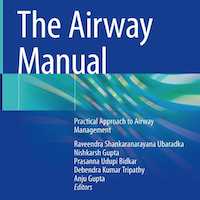
Analgosedation Practice During Noninvasive Respiratory Supports
Sedation is frequently used in patients with acute respiratory failure (ARF) undergoing Noninvasive Respiratory Supports (NRSs). Current analgesic practices are becoming more standardized, with analgosedation strategies increasingly... read more
Flow Control Ventilation in ICU
Flow control ventilation is an innovative technique of mechanical ventilation with a potentially lung protective characteristics. The constant inspiratory and expiratory flow, no ventilation pauses, and inspiration to... read more
Textbook of Acute Trauma Care
This book provides a systemic approach to acute trauma care in line with the ABCDE paradigm and up-to-date information on assessing and managing major trauma from the pre-hospital to the rehabilitation phase. The book's... read more
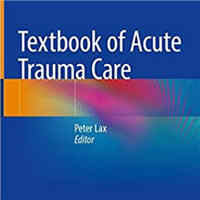
RSV Infection – Epidemiology and Clinical Risk Factors
Respiratory syncytial virus (RSV) infection is the most frequent reason for hospitalization of infants in developed countries. Premature birth without or, especially, with chronic lung disease of prematurity, congenital heart... read more
Tracheostomies The Complete Guide
Tracheostomies: The Complete Guide (2nd ed.) serves as a comprehensive resource for healthcare practitioners and patients navigating the complexities of tracheostomy and laryngectomy care. This edition emphasizes the... read more
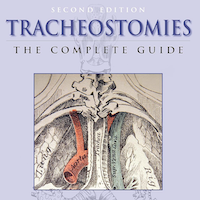
Core Topics in Airway Management
Management of the airway is an important and challenging aspect of many clinicians' work and is a source of complications and litigation. The new edition of this popular book remains a clear, practical and highly-illustrated... read more
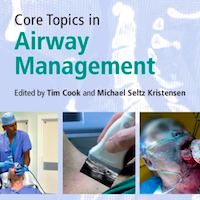
Tracheal Intubation in Critically Ill Adults with a Physiologically Difficult Airway
Using a Delphi method, agreement among a panel of international experts was reached for 53 statements providing guidance to clinicians worldwide on safe tracheal intubation practices in patients with a physiologically difficult... read more
The role of pleural pressure and airway closure during mechanical ventilation
Related to our paper, Van Egmond et al. highlighted key physiological concepts we must be aware of. We believe, however, that the described physiological com-plexity has limited impact on the daily use of esophageal pressure... read more
Emergency Department Crowding Impact on Lung Protective Ventilation
Obtaining definitive control of the airway, when indicated, is the responsibility of the emergency medicine physician. Traditionally patients were managed on the ventilator with lung volumes of 10 – 15 ml/kg. However,... read more
Improving Intubation Performance with Airway Registries
Airway registries are used as a crucial tool to monitor and improve intubation performance and patient care. ED airway registries inform and document the efficacy of quality improvement initiatives to improve intubation performance... read more
Baricitinib or Tocilizumab for Severe COVID-19 Treatment
Pharmacologic treatment of COVID-19 has continued to evolve since the onset of the pandemic, and yet many questions remain about optimal treatment. Medicine strives to provide evidence-based guidance on treatments, but... read more
Improving Outcomes in Patients with Difficult Airways
Evidence indicates that the airway community has successfully conquered the anatomically difficult airway, as these patients are managed safely with a low incidence of morbidity and mortality. In contrast, the literature... read more
Interventional Critical Care: A Manual for Advanced Care Practitioners
This book provides a comprehensive, state-of-the art review of the interventional procedures that can be performed in intensive care settings. The book addresses fundamentals of the indications and technical aspects of procedures,... read more
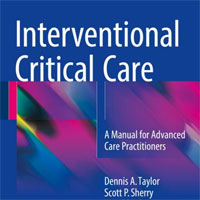
Physiologically Difficult Airway Evaluation
Multiple international airway societies have created guidelines for the management of the difficult airway. In critically ill patients, there are physiologic derangements beyond inadequate airway protection or hypoxemia.... read more
Transtracheal Jet Ventilation in the Can’t Intubate Can’t Oxygenate Emergency
Transtracheal jet ventilation (TTJV) is associated with a high risk of device failure and barotrauma in the CICO emergency. Guidelines and recommendations supporting the use of TTJV in CICO should be reconsidered. 44 studies... read more
Safe Tracheal Extubation After General Anesthesia
Tracheal extubation generates less interest than tracheal intubation. Research, guidelines and clinical anecdotes tend to focus on airway management at the beginning of anesthesia, and it is rare for the challenges of extubation... read more
Evolution of Inexpensive Videolaryngoscopy
Not many procedures in Medicine have received the attention and focus of medical practice, especially in critical care, as laryngoscopy. A secure airway serves as a lifeline to the critically ill, yet the process of securing... read more
Risk Factors for Severe COVID-19 in Children
Results identify children at potentially higher risk of severe disease who may benefit from COVID-19 prevention efforts, including vaccination. Rates of severe COVID-19 establish a baseline for monitoring changes in pediatric... read more
Head Rotation in Anaesthetised Apnoeic Patients Significantly Increases Mask Ventilation Efficiency
Head rotation of 45° in anaesthetised apnoeic adults significantly increases the efficiency of mask ventilation compared with the neutral head position. Head rotation is an effective alternative to improve mask ventilation... read more
No Such Thing As a Simple Sedation Case
In my CA-2 year I encountered an elderly gentleman who needed an angiogram of his dialysis fistula. After starting the propofol infusion I placed an oral airway because his tongue obstructed his breathing by flipping back... read more
Prehospital Management of Trauma Patients with Rib Fractures
Rib fractures are associated with a direct, blunt force trauma to the thorax. It is estimated that 10% of all patients who were admitted to the hospital after blunt chest trauma have at least one rib fracture. In the prehospital... read more









